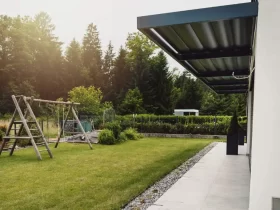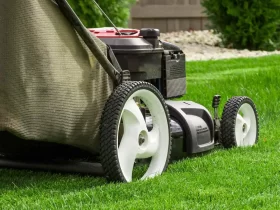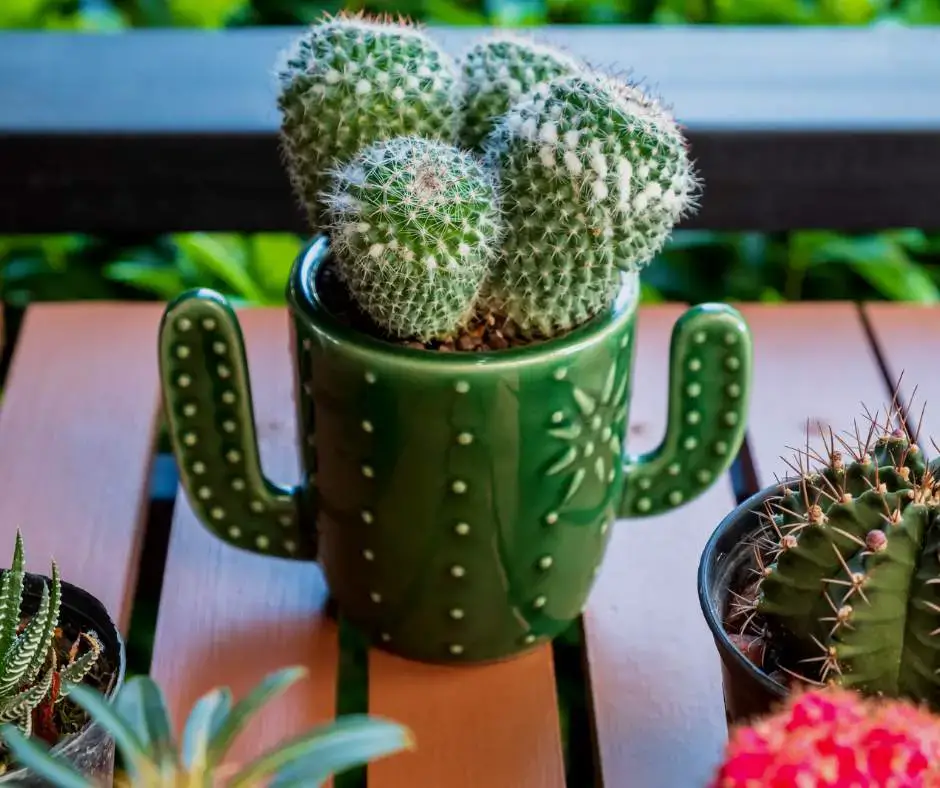Are you curious about how long cacti can live? We are too, and that’s why we’ve decided to dig into the thorny details of this prickly topic! Read on to see how long a desert staple like the cactus can survive in its harsh environment, how to keep your houseplant healthy, and we dive into how long does a cactus live!
Introduction to the Cactus Plant
Cacti are some of the most indestructible plants on the planet, with many species living for centuries. In general, most cacti live an average of 50 years. However, how long do cacti live can be variable, as there there are certain species that survive even longer and may exceed a life span of 100 to 150 years or more. This is due to their adaptations for extreme climates as cacti are a group of succulent plants that have evolved to thrive primarily in arid conditions where other plants would perish – this makes them incredibly hardy when it comes to surviving environmental stresses such as cold temperatures, draughts and floods. Cacti can also survive fires by regenerating from their root systems and remain undamaged for extended periods. The exact amount of time each individual cactus lives can vary depending on several factors including species, environment and cultivation techniques used. Despite these differences, all cacti have one thing in common – their longevity!
Types of Cacti
Cacti belong to the Cactaceae family and are native to North and South America. These versatile plants are extremely drought tolerant, require minimal maintenance and can live for many years in a variety of habitats and climates. However, the life span of a particular type of cactus may vary widely depending on its conditions. Generally, most small- to medium-sized cacti will live for about 10 years; however, there are some species that can live 20 to 30 years, and some even up to 150 years or more!
The lifespan of a cactus may also depend on its species. Examples of common varieties and their respective lifespans include:
- Prickly Pear Cactus (Opuntia): 15 to 20 years
- Barrel Cactus (Ferocactus): 40 to 100 years
- Organ Pipe Cactus (Stenocereus thurberi): Up to 150 years
- Christmas Cactus (Schlumbergera bridgesii): up to 50 years
- Moon Cactus (Gymnocalycium mihanovichii): 20+ Years
- Golden Barrels (Echinocactus Grusonii) : Up To 200 Years
Factors Affecting Lifespan
Cacti are long-lived plants with the potential to survive for several centuries. The lifespan of a cactus can depend on a variety of factors, such as its species, geographic location, general care and environment.
In some cactus species, the size of the plant can impact longevity as well. Larger varieties typically tend to live longer than smaller ones as they are more resistant to environmental influences which can speed up degeneration and death. Temperature can also be an important factor: cacti native to warm climates may not survive cold winters if not taken indoors or given special winter protection.
The quality of their soil and their growing conditions also play a role in how long a cactus lives. Generally, cactus grow better with higher specific soil quality, sufficient water and light availability, and protective measures such temperature control or frost protection during winter months, the longer it will likely last. Ultimately however, even with ideal conditions and proper care there is no known life expectancy for all cacti – making each one’s lifespan quite unpredictable! Some types of cactus live without much watering, and indoor cacti can often survive for long periods without needing the same care and attention as other indoor plants. An indoor cactus plant for example, can live for decades with the proper care, making a cactus houseplant a perfect addition to your home.
Common Lifespans – Succulents
Wondering how long can a cactus live? Cacti are a family of succulent plants, most of which grow naturally in desert climates. Individual cacti have extremely diverse lifespans – some live for only a few years, while others can continue to flower and reproduce for hundreds or even thousands of years! A cactus lifespan depends heavily on its environment. Here’s a look at some of the most commonly-encountered cactus species and their typical lifespans. Different types of cacti:
- Organ Pipe Cactus – This species is native to the Sonoran Desert in Arizona and can live to be up to 100 years old.
- Saguaro Cactus – Native to the Sonoran Desert in Arizona and Mexico, this giant cactus can live up to 200 years.
- Barrel Cactus – These low-growing cacti can live for up to 75 years, depending on their environment and climate.
- Prickly Pear Cactus – Favored as both ornamental plants and food sources, prickly pears are relatively short-lived, with some varieties surviving only 10-15 years while others may grow past 20 or 30 years.
- Fishhook Barrel Cactus – This small species is native to dry areas in Arizona and New Mexico, where it can last up to 50 or 60 years before it succumbs to environmental factors like extreme temperatures or prolonged drought.
Caring for Cacti – Indoors and Outdoors
Cacti add an interesting and unusual element to your home or garden. With proper care, many cactus varieties can be enjoyed for generations. True cacti come from North and South America and will vary in size from small to very large specimens. Keeping a cactus for many years requires just a few simple steps.
Caring for your cactus depends on the growing conditions you have provided it. The frequency of watering depends on the variety of cactus, but the general rule is that when the soil starts to dry out, it needs to be watered thoroughly but not too often – usually once every two weeks or so during the growing season of spring through summer. During autumn and winter dormancy, watering usually can be reduced as most varieties will require less water during that time. An indoor cactus can live a long time without too much water, but to determine how long to go between waterings, it is wise to do the “finger test”, and simply gauge how much moisture is in the soil – it should never be too dry.
Fertilizing can help your cactus thrive, but should only be done two or three times a year using an organic fertilizer with a low level of nitrogen rather than a chemical fertilizer designed for houseplants. Cacti should be kept in full sun in well-draining soil with some organic matter mixed in – such as washed sand and perlite – to improve drainage even further; fertilizers should never be used if there is any chance of causing root burn from excess salts in the soil by over-fertilization.
Inadequate drainage is one of the main causes of death for cacti, so make sure that potted specimens are placed in appropriate containers with adequate drainage holes at least one inch down from the top edge; terracotta pots are recommended because they allow more evaporation than other materials such as plastic, which keeps plant roots cooler in hot weather and increases oxygen levels around root tissues to promote growth.
Another factor that may influence a cactus’ lifespan is its ability to withstand cold weather; those located above freezing level should generally survive winter without damage if no snow accumulates over their crowns (the region where buds and leaves emerge).
With proper care and placement some species may live up to 50 or 100 years – or longer! Though most people typically view them as slow-growing plant lifeforms, caring for your cactus is worth it!
It is obvious, but also important to note, that the myth that cactus live without water is only a myth – while they do not require as much, or as regular watering as other house plants, water is required from time-to-time, with direct sunlight every day, or indirect light periodically. How long cactus live is entirely dependent on these two factors it needs to grow.
Signs of a Healthy Cactus
In order to have a better understanding of the longevity of cacti, it’s important to know how to recognize signs of a healthy cactus. A healthy cactus should have an even shape and color that is silvery-green when healthy. The spines should also be evenly distributed and share the same length.
A well-hydrated plant should not have any wrinkles or creases and will feel firm if gently squeezed; however, caution is advised, as too much pressure can cause damage or break the spines of a cactus. Additionally, look for signs of new growth such as flowering buds or tiny leaves emerging from new shoots respectively, which shows that it is thriving in its current environment.
Unhealthy signs include sagging spines, yellowing thorns and stems, discoloration or softness with pitting when squeezed firmly. These signs indicate dehydration and can mean the plant needs more water immediately; otherwise it may risk permanent damage. If these symptoms persist for an extended period of time despite adequate sunlight and hydration levels, it could be due to pests, disease or stress from an improper environment that all require investigation to ensure a healthier lifespan for your plant in the long run!
Common Problems and Solutions to the Cactus Life Span
Many cacti are long-lived succulents and can live for decades when looked after properly. Common problems that can affect the life of a cactus include poor soil, inadequate watering, lack of sunlight, and pest infestations. Understanding the most common problems and solutions can help to ensure healthy growth in your cacti garden.
- Soil: Cacti need well-draining soil that contains organic matter such as compost or manure. Ensure the soil is not too sandy or clay-like and is kept slightly moist at all times.
- Water: Too little water can lead to stunted growth, yellow leaves and wilting, whereas too much water will cause root rot. It is important to ensure regular watering during the summer months, leaving the soil moist but not soggy. During winter when growing slows down significantly reduce watering until spring begins again when regular watering can resume.
- Sunlight: Cacti love sunshine and must receive direct sunlight at least a few hours a day in order to thrive and survive long term. Insufficient light will cause weak growth that may not last more than a few years if not resolved quickly.
- Pests: Aphids are small insects with piercing-sucking mouth parts which feed on the moisture levels within the plant’s tissues; they leave trails of sticky honeydew on the surface of your cactus which can provide an ideal environment for secondary infections from fungi spores leading to root rot which causes permanent damage to your cactus plants themselves. It is important to monitor your plants for any signs of pests in order to be able to take prompt action should this occur by using an appropriate insecticide or bio neem oil product before permanent damage occurs.
Conclusion – How Long Does a Cactus Live
In conclusion, the lifespan of a cactus can vary greatly depending on the species and growing conditions. Although some cacti have lifespans of a single year others can live for decades or even centuries. Cactus species from desert climates are typically the most resilient and are more likely to reach an extended lifespan than those from tropical regions.
Proper watering, adequate sunlight, and beneficial soils will help to ensure that a cactus is able to thrive in its environment and reach its maximum potential longevity.































Leave a Reply